Today's Tidbit... Watching Away Games on Illinois Field
We were once made of hardier stock. We sat in bleachers on cold afternoons watching football games with nothing to keep us warm besides natural fabrics. Synthetic fabrics and fibers that now keep us cozy did not exist; neither did commercial radio, television, or that World Wide Web thing. Still, people once sat in the bleachers on cold afternoons even when there wasn't a game. Instead, fans filed into the stadium to watch the scoreboard as they updated it with news of a game played hundreds of miles away. I don't know how often that happened, but it occurred on Illinois Field during the 1914 and 1916 seasons as Bob Zuppke began changing the fortunes of the Illinois football program.
Unlike the beautiful brick and concrete Illinois Memorial Stadium, where Red Grange led the Illini to a big win over Michigan in 1924, its predecessor, Illinois Field, was nothing fancy. Sets of wooden bleachers were added over time, eventually surrounding the field, and the place had only a serviceable scoreboard. Still, people relied on the scoreboard to inform them of a game they could not see.
When the latest news arrived by telegraph or newswire, game simulations were common on and near college campuses. Earlier stories covered the crowds gathering outside newspaper offices, theaters, and gymnasiums to share news of battles on foreign fields.
Nowadays, it is not unusual for fans to sit in basketball arenas watching a distant game on a giant screen. However, when the Illinois faithful sat in the stands at Illinois Field in 1914 and 1916, there was nothing to watch but a few scoreboard operators changing the down, distance, and scores on the manual scoreboard.
For the 1914 game at Minnesota, 2,000 fans gathered at Illinois Field and went wild when the Illini scored the first touchdown.
A noisy bunch, as the Illini collected themselves for the 1916 Wisconsin game played in Madison, the Daily Illini instructed fans to put themselves on mute during the game. It seems the telegraph operator had difficulty hearing the telegraph tapping out its signal during the Minnesota game earlier in the season, so even the cheerleaders were told to remain silent while the game was in progress.
I did not check on when the tradition of gathering at Illinois Field began or ended, but the next time you check a score or receive a score notification on your phone, remember there were once football fans far hardier than you.
Football Archaeology is reader-supported. Click here to buy one of my books or otherwise support the site.


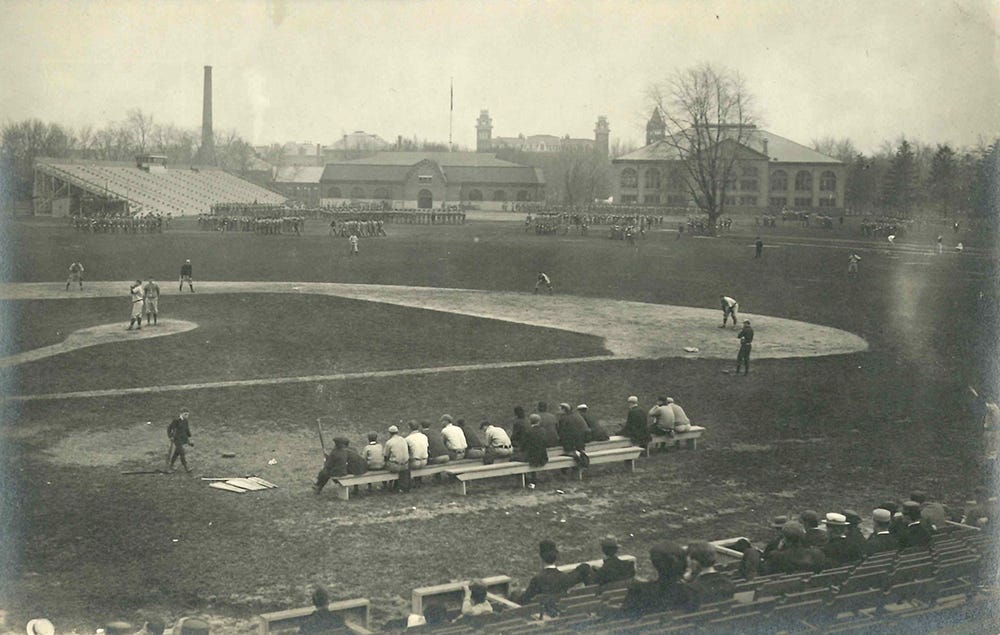
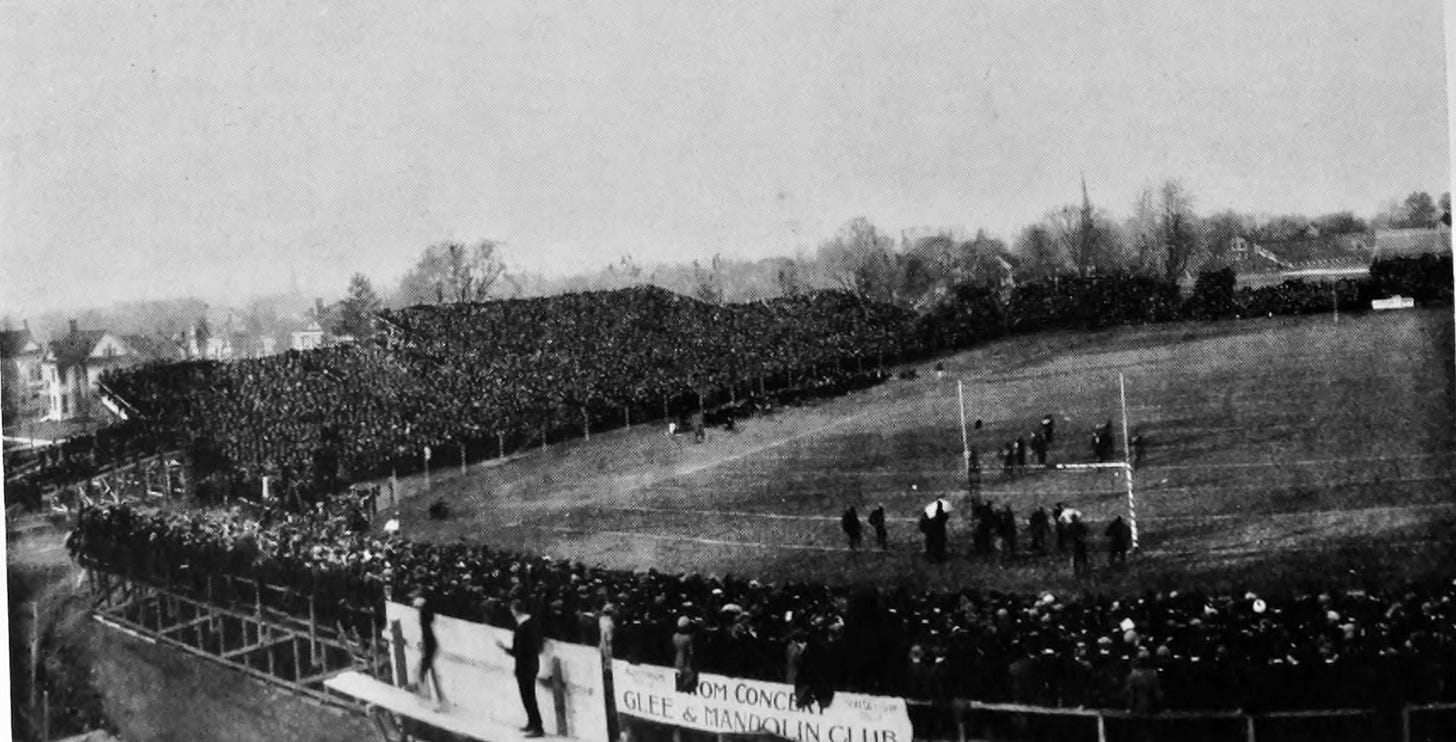
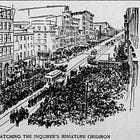

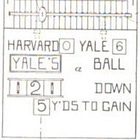

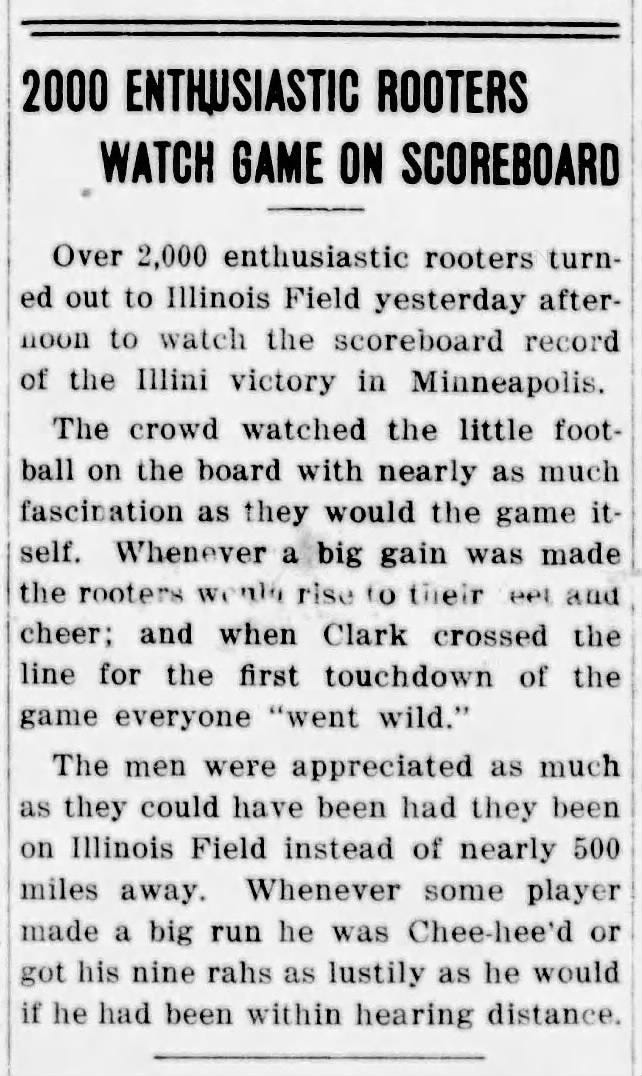
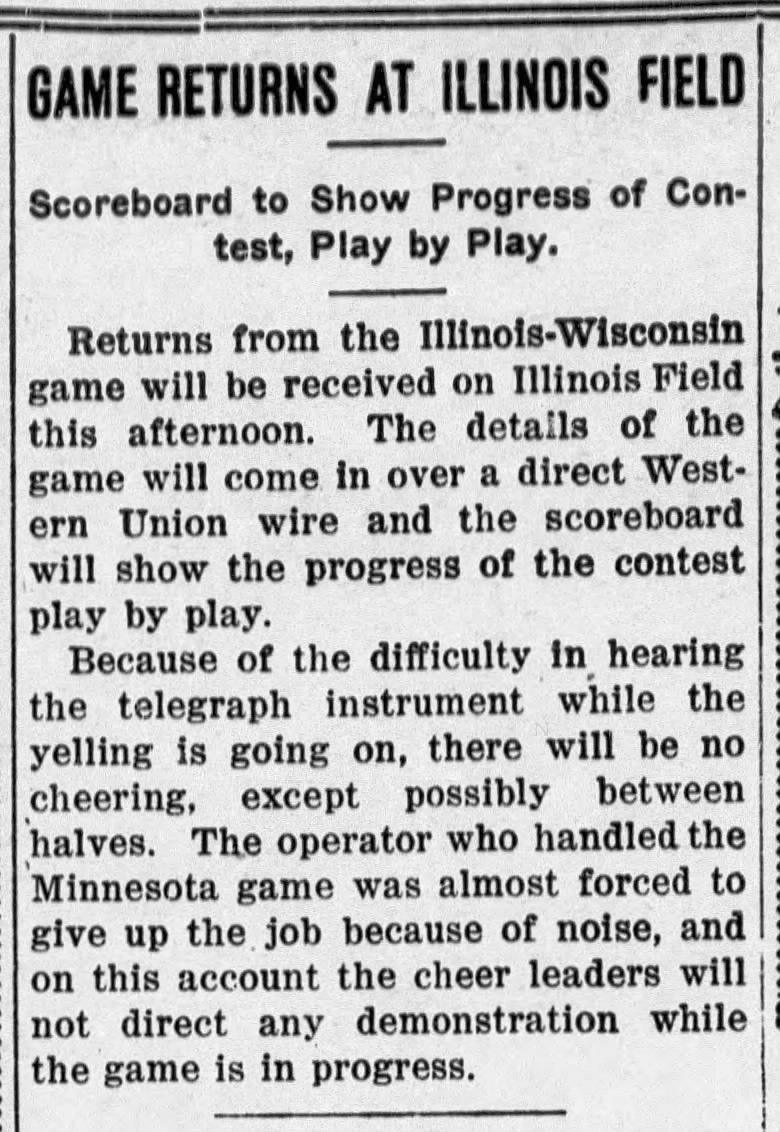
The Boston Globe, Nov. 19, 1892, reported a similar remote crowd outside its newspaper office for the Harvard-Yale game played 90 miles from Boston in Springfield. Under the headline: “Tremendous Crowd Gather in Front of The Globe’s Blackboard”:
"THE GLOBE had 'the people' on both ends of the wire this afternoon—in Springfield and in Boston. How they bustled and hovered about the bulletin board erected in front of the office on which the artist in chalk was writing in a free, bold hand the condensed dispatches which were ticked off by the lightning machine operator of the telegraph upon the same exalted perch.
"It was with a celerity suggestive of the same space-annihilating fluid, that the people flocked to the free and reliable news exchange opened for this occasion by the people’s paper. Like the surging sea they swayed back and forth, the murmurs of discontent and the glad acclaims of satisfaction, as the condition of the play influenced their feelings, sounding not unlike the distant boom of the surf in some cases: while in others the clear glad shout of victorious hilarity went with electrifying effect, reverberating away over the heads of the people North, South, East and West.
"It was THE GLOBE’s university in full session. It was a cosmopolitan crowd. The lad of 12, the youth of 18, the man of 35, the man of family, the bachelor, the moneybags, the bohemian, the man of much money and many estates, the—the—well, everybody was there."
CFL fans still sit outside in the cold, especially during playoff time in November.